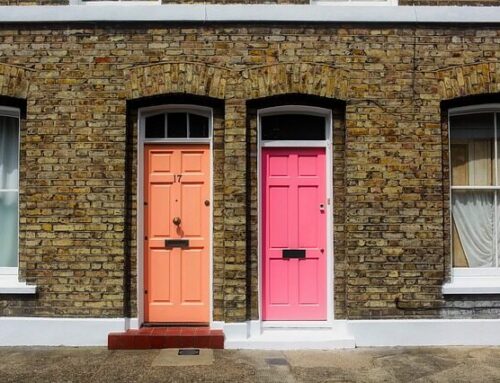Painting your home is one of the easiest ways to renovate the place and give it a totally different look. It is not as demanding as other home improvement projects, so it’s no surprise many people do it without calling a handyman. There are certain mistakes (almost) everybody does when painting a room for the first time. Some can be easily fixed, while others require professional help, which can be costly. Last summer a lot of tradespeople reported they “had to pick up the pieces of DIY projects gone wrong” during the coronavirus lockdown. So, to help you save a lot of money and efforts we’ve asked our experienced painters and decorators to put together some tips on how to prevent home decorating blunders. Here’s what they share:
Read also: How to Avoid 5 Common Mistakes When Planning a Renovation at Home

Always cover the furniture, floors and windowsills before painting the room.
Don’t Skip Preparation
Even if it seems like skipping some steps when preparing to paint will save you time, it’s not worth it. In the end, you will find yourself spending even more time cleaning up and fixing various issues. Get the room ready in advance and do it thoroughly to ensure easy work process and seamless results. We have already posted the most important things you need to do when preparing any room for painting.
Do Use a Primer
Skipping the primer is acceptable only in one situation – when you have to paint a pristine white surface. The undercoat is your guarantee that the colour you have chosen in the store will look exactly the same in your home. This is especially true when painting over dark walls. Applying primer to your wall creates an even base for the fresh coat of paint. For the best results, use a high-quality undercoat.
Check also: The Duties of a Handyman
Test the Colour Before Painting
A lot of people rely on the colour chips displayed in the store when choosing paint for their home. This is probably one of the most common rookie mistakes in home renovation projects. Every product catalogue has a fine font disclaimer stating the actual colours may vary from the ones in the picture. Ask any professional handyman, and they will advise you to buy a small amount of paint and test it on your wall to see how it looks. It may seem like a redundant step, but be sure it’s better than having 10 gallons of paint that you hate.
Read also: Why You Need to Hire a Professional Handyman

Make thorough research when choosing the type and colour of paint for your home.
Determine the Type of Paint You Need
If you are refreshing your walls, you need to paint over an existing coat. It is essential to know what kind of paint you need to cover. Are you dealing with a surface treated with an oil-based paint? If so, trying to apply latex formula over it will be pointless because the layer will crack and peel. To avoid this, sand down the wall – this will help the fresh paint spread even and adhere. If you don’t know what the type of paint you are about to cover is, you can do a quick test. Apply some denatured alcohol on a cotton ball and rub firmly onto the surface. If the colour transfers to the cotton, you are dealing with latex paint. If the cotton is clean – you have an oil-based layer. Another solution is to get a sample of the old paint if possible, bring it to the store, and ask someone from the paint section to check it.
Check also: 10 Ways to Revamp Your Furniture With Ease
Choose the Right Weather
Weather conditions have a significant effect both on the painting process and the end results. Paint doesn’t handle well extreme temperatures. Latex and acrylic formulas, as well as some types of caulk, will freeze if you forget them outside in winter. Freezing ruins the paint, and you will have to get a new one. Cold temperatures will also prevent the surface from drying completely, and the layer will easily peel when you touch it.
Read also: Is Summer the Best Season for Home Refurbishment
As you can guess, the hot temperatures are also a problem – the paint will start getting dry before you can apply it evenly. If you are refreshing your walls in summer, try to avoid working in direct sunlight. Another thing you need to consider is the humidity as it will slow down the drying of the paint. If you live in a humid area, you can decrease the drying time by using a fan.



